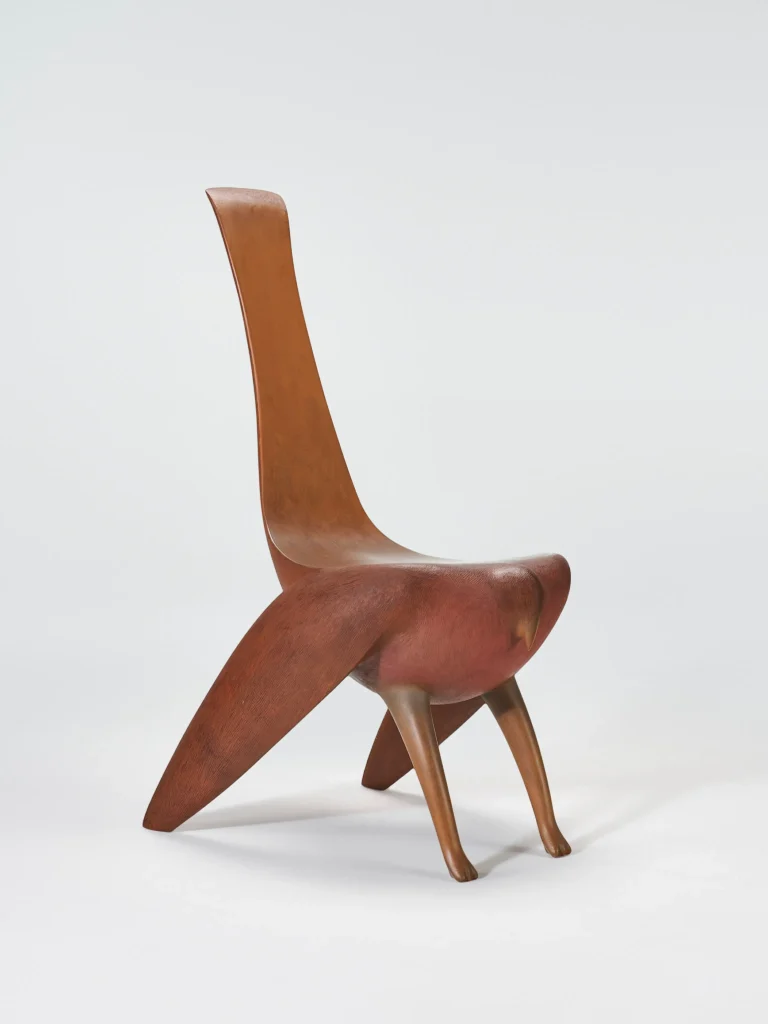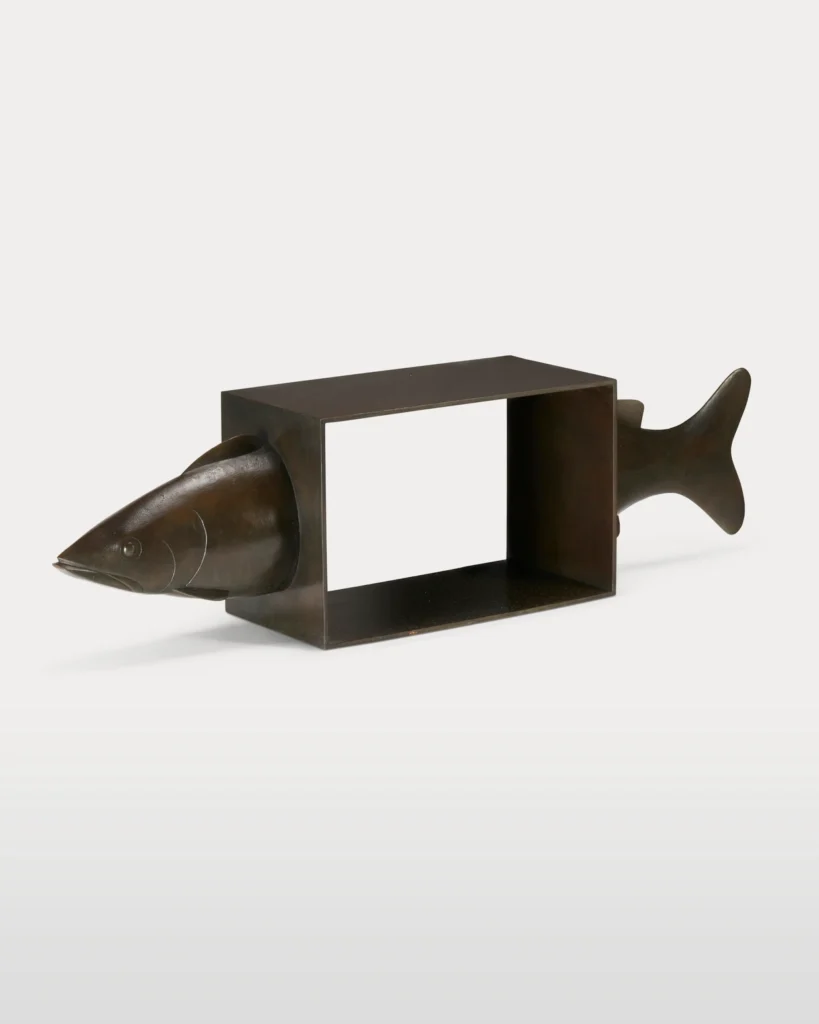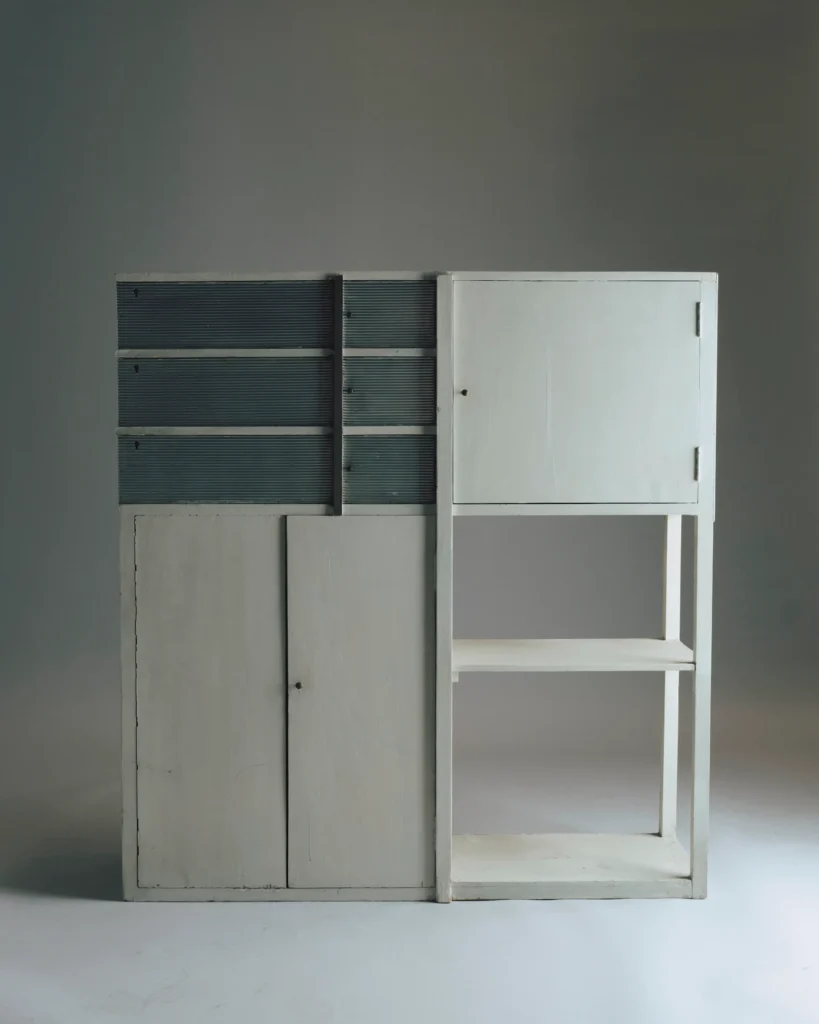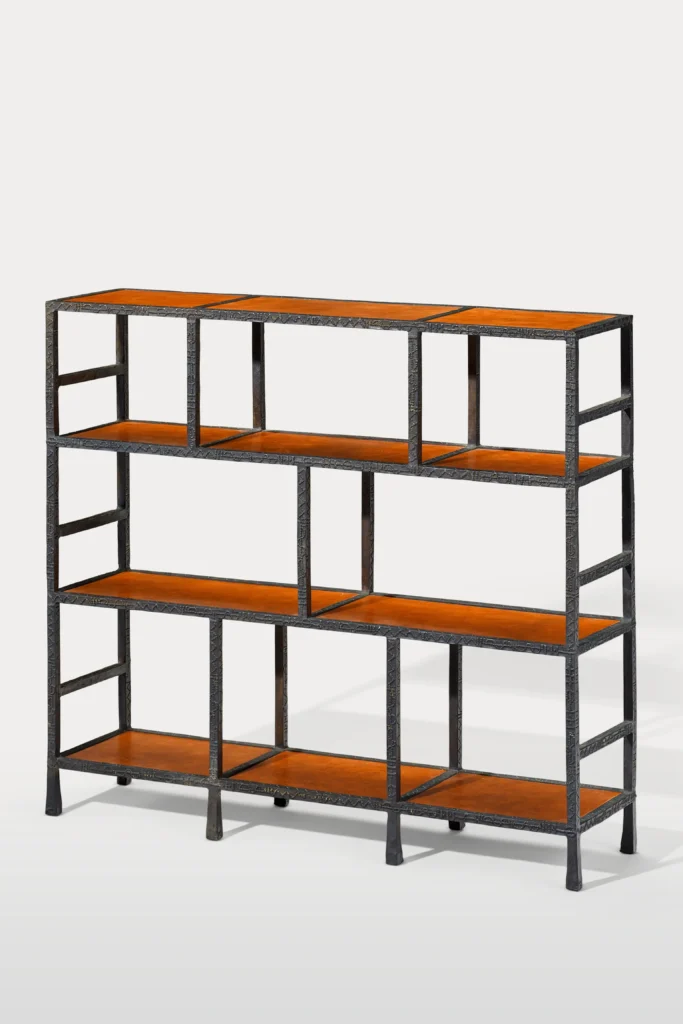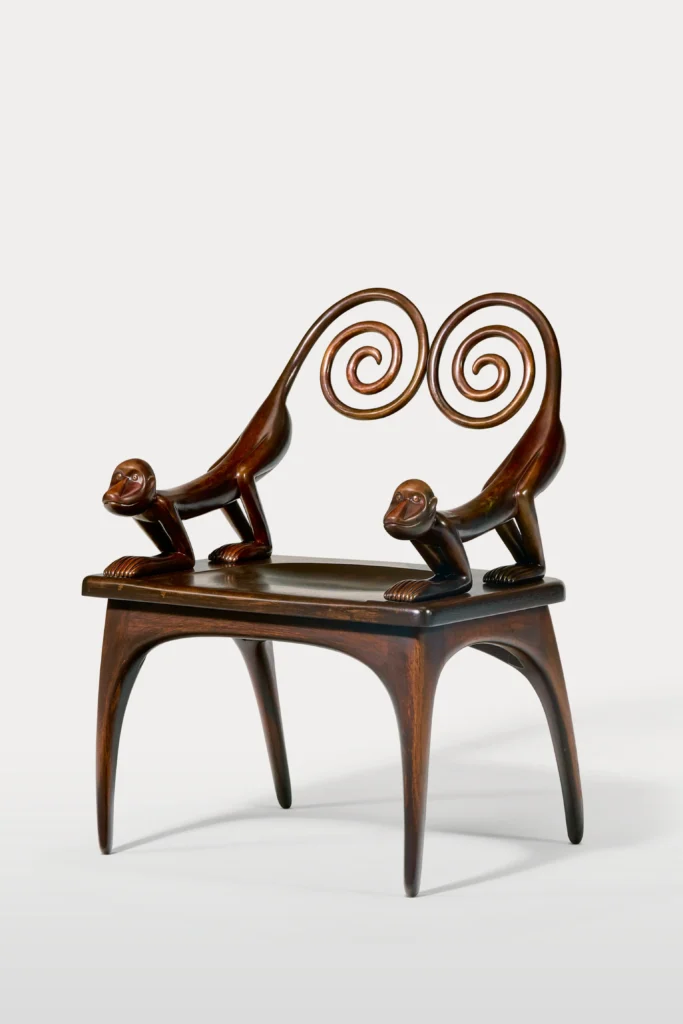
“Michael has a great eye, and that is a rare talent indeed,” preeminent design specialist Simon Andrews told me when I asked him about Michael Jefferson of Christie’s, my recent Collecting Design: History, Collections, Highlights guest. Andrews went on: “He not only has a great eye for all things design—furniture, lamps, objects, glass, and ceramics of all eras—but also for those magical sensations that we so often take for granted, like encounters with landscapes, flora, and fauna… This, together with his eloquence of interpretation and his enthusiasm to share, makes Michael a unique and holistic interlocutor of the special essence of all things.”
My conversation with Jefferson focused on the state of the collectible design market, and more specifically on a list of legendary designers whose work, Jefferson explained, exemplify “blue-chip” status right now: Les Lalanne, Isamu Noguchi, Eileen Grey, George Nakashima, Diego Giacometti, Charlotte Perriand, Judy McKie, and Ingrid Donat. If he had to make this list three or four years ago, he noted, it would have looked quite different, because the market for collectible design is so dynamic, shifting every season in response to the idiosyncratic tastes of the day. According to Jefferson, bronze is currently experiencing unparalleled demand, while upcycled materials are out. Next season will likely bring another swing, so the market must be followed very closely.
The historical figures included on Jefferson’s list each in their own way proposed holistic approaches to integrating architecture, interiors, culture, and social mores and in the process revolutionized design in the 20th century. Because these modernists pushed boundaries and made us see design in a new light, their achievements continue to be recognized and memorialized in scholarship, exhibitions, and public and private collections. When it comes to evaluating contemporary collectible design, however, the criteria changes; greater emphasis is placed on aesthetic expression and the way pieces converse with the au courant interiors of contemporary collectors’ homes. This is certainly true of McKie’s and Donat’s furniture designs, which have seen a sharp rise in demand in recent seasons. Though their visual languages are quite distinct, both women work in cast bronze and have an aptitude for powerful, sculptural forms.
My conversation with Jefferson also covered one of Christie’s most recent achievements: the sale of François-Xavier Lalanne’s Rhinocrétaire I (1964) in Paris last month. Inspired by the work of both Dalí and Dürer, this nearly life-size, rhinoceros-shaped secretaire was estimated at €4-6 million and ultimately fetched over €18 million—a record for the artist and the second highest auction price ever earned by a work of design. Jefferson offered insights into the success of the sale, mentioning in particular that the work represents a formative chapter in the artist’s career, created just as he transitioned from painting to sculpture, and perfectly encapsulated his signature oeuvre. Unlike François-Xavier’s second version of the design—Rhinocrétaire II (1966)—Rhinocrétaire I had not been seen in public since it was originally unveiled at Galerie J in Paris in 1964, where it was purchased and remained with the original owners through the ensuing six decades.
Husband-and-wife artists, François-Xavier and Claude Lalanne, collectively known as Les Lalanne, came to prominence in the 1960s and 70s, working separately in their shared home-studio in Uri, France, mainly producing for public and private commissions. While their careers were long, their fantastical, poetic bronze sculptures rarely surfaced on the secondary market before the groundbreaking sale of Yves Saint Laurent and Pierre Bergé’s collection at Christie’s Paris in 2009—often referred to as “the sale of the century”—just a few months after François-Xavier passed. Among the 700+ lots of that sale were two extraordinary and memorable works by Les Lalanne.
Saint Laurent and Bergé were long-time collectors of Les Lalanne. In 1965, the couple asked Francois-Xavier to create a bar for their library, a bright room filled with paintings by Matisse, Burne-Jones, Modigliani, and Rousseau, with windows overlooking the garden of their Parisian home. Between 1974 and 1985, Saint Laurent and Bergé commissioned Claude to create a series of floor-to-ceiling bronze and copper mirrors embellished with botanical motifs for their upstairs music room. At the 2009 sale, both lots reached ten times their estimates. The bar sold for €2.7 million, and the ensemble of mirrors sold for €1.8 million. Ever after, Les Lalanne have been the hottest ticket in the collectible design market.
Contrary to the rule of thumb, rarity doesn’t seem to play a decisive role in the valuation of work by Les Lalanne. Claude remained quite active into the 21st century, continuing to receive commissions from galleries, institutions, municipalities, and collectors until her passing in 2019. After the success of the “sale of the century,” she began to reedition earlier designs. In December 2022, Christie’s New York auctioned the collection of Francois-Xavier and Claude’s daughter, Marie Lalanne, which offered the first real insight into the extent to which early designs had been replicated.
Take for example Claude’s Williamsburg Chairs, originally commissioned for the Colonial Williamsburg Foundation garden in the 1980s. The initial set sold successfully at Sotheby’s New York in 2005. Christie’s sale of Marie’s collection in 2022 revealed that, starting in 2011, Claude reeditioned the Williamsburg Chairs in the 100s—though the precise number remains private. According to Jefferson, the reeditions produced in the final eight years of Claude’s life, at least so far, continue to be equally sought after by collectors.
In contrast, rarity has a significant impact on the valuation of works by 20th-century artist-architect Isamu Noguchi, a subject for whom Jefferson is considered a world expert. While Noguchi created an array of unique functional and sculptural objects for art collector clients between the 1930s and 1980s, the secondary market for collectible design did not really exist in Noguchi’s lifetime. His iconic designs—such as the Lunar Light Sculpture, Dretzin Coffee Table, and Milton Greene Dining Table—don’t come up for auction often. But when they do, they fetch prices in the millions. Jefferson shared one of his experiences bringing a Noguchi piece to auction, back when he worked for Wright Chicago in 2018 and came across Noguchi’s egg-shaped Taking Dining Table with a pink marble top. The piece had been created for Milton Greene’s Weston, Connecticut home in 1949 and had only been seen publicly in photographs. It sold for $1,653,000.
Beyond private commissions, Noguchi regularly designed for industry and is well known for his biomorphic furniture designs for Herman Miller and Knoll in the mid-20th-century. For these mass produced Noguchi pieces, the size of the production run is crucial to the valuation. His most successful Herman Miller design, for instance, the Model IN-50 Coffee Table, was produced from 1947 to 1973 and then again from 1984 to the present. The production is just too extensive for this design to be considered collectible.
Yet other Noguchi designs for Herman Miller were deemed too avant-garde for postwar American tastes and consequently were produced only in limited numbers. Noguchi’s Model IN-61 Chess Table, for instance, was initially created for a group show at the Julien Levy Gallery in New York in 1944, where Marcel Duchamp, Max Ernst, and Alexander Calder participated as well. Herman Miller then produced a few to display in showrooms and test the market. Interest in the Chess Table was so low that Herman Miller never made more. One of the surviving examples sold for $655,200 at Christie’s New York last year. These tables are the rarest of the rare, according to Jefferson. In his entire career, he told us, he has handled only three.
As Jefferson and the team at Christie’s Design are now getting ready for next month’s sale—the most important design sale of the year—I can’t wait to see what shifts in the market come to the fore in response to the tastes of this moment. This article was published today in Forum Magazine by Design Miami/.
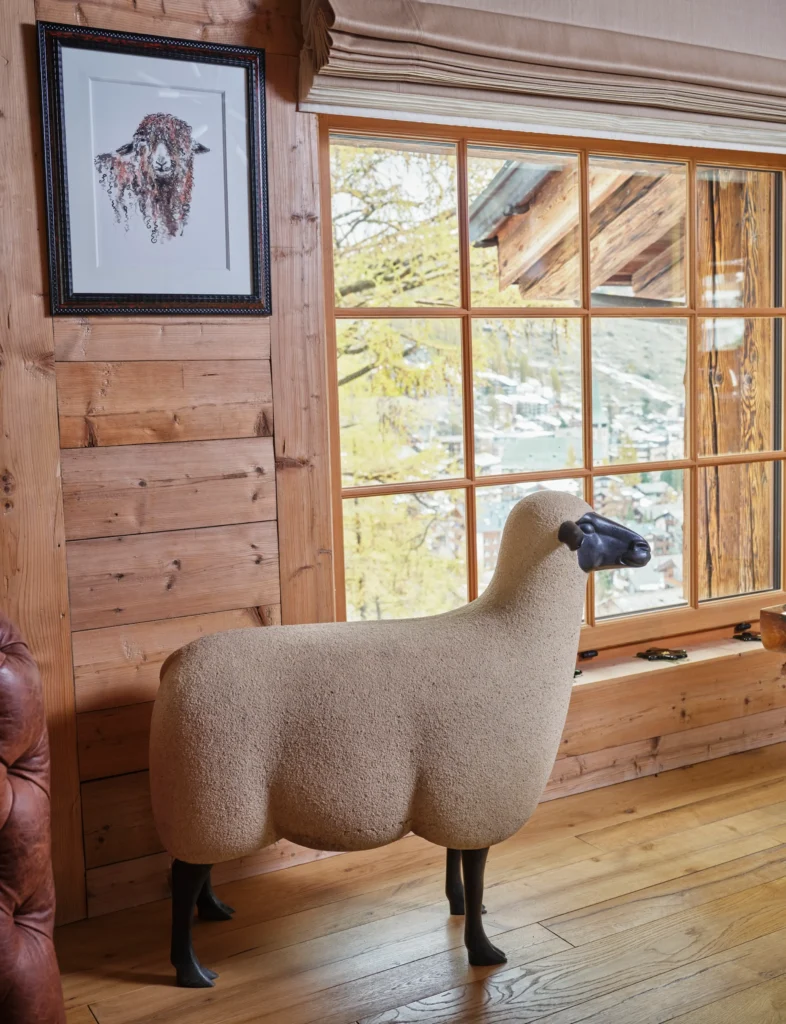

Photo © Wright.
